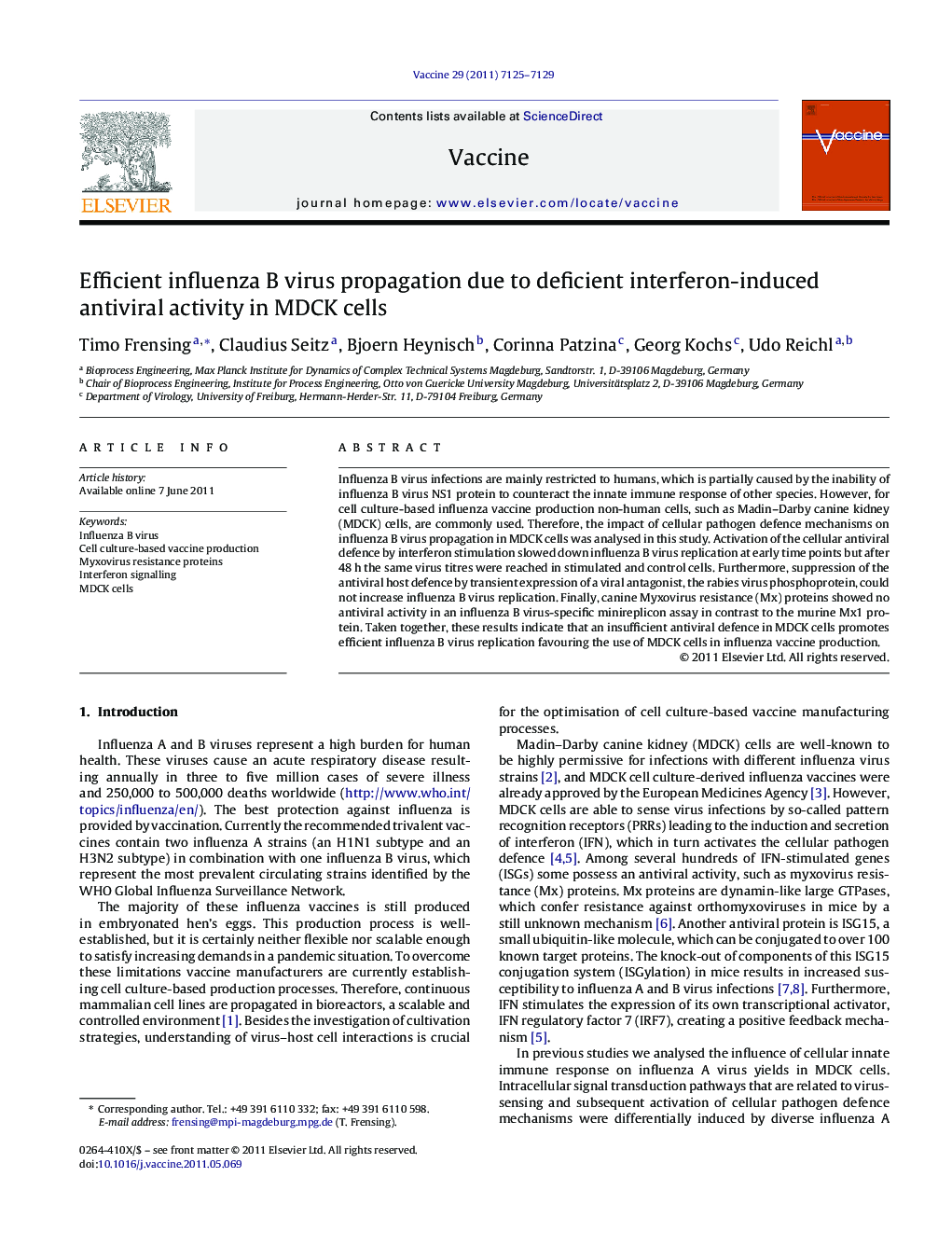| Article ID | Journal | Published Year | Pages | File Type |
|---|---|---|---|---|
| 10969421 | Vaccine | 2011 | 5 Pages |
Abstract
Influenza B virus infections are mainly restricted to humans, which is partially caused by the inability of influenza B virus NS1 protein to counteract the innate immune response of other species. However, for cell culture-based influenza vaccine production non-human cells, such as Madin-Darby canine kidney (MDCK) cells, are commonly used. Therefore, the impact of cellular pathogen defence mechanisms on influenza B virus propagation in MDCK cells was analysed in this study. Activation of the cellular antiviral defence by interferon stimulation slowed down influenza B virus replication at early time points but after 48Â h the same virus titres were reached in stimulated and control cells. Furthermore, suppression of the antiviral host defence by transient expression of a viral antagonist, the rabies virus phosphoprotein, could not increase influenza B virus replication. Finally, canine Myxovirus resistance (Mx) proteins showed no antiviral activity in an influenza B virus-specific minireplicon assay in contrast to the murine Mx1 protein. Taken together, these results indicate that an insufficient antiviral defence in MDCK cells promotes efficient influenza B virus replication favouring the use of MDCK cells in influenza vaccine production.
Related Topics
Life Sciences
Immunology and Microbiology
Immunology
Authors
Timo Frensing, Claudius Seitz, Bjoern Heynisch, Corinna Patzina, Georg Kochs, Udo Reichl,
